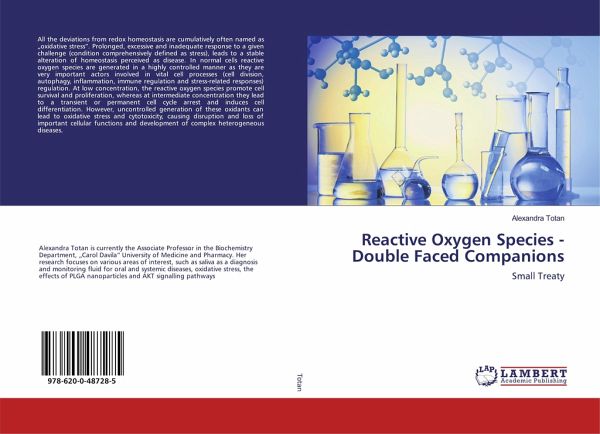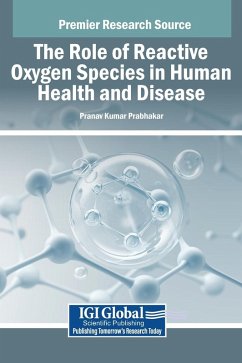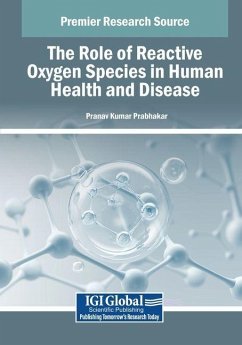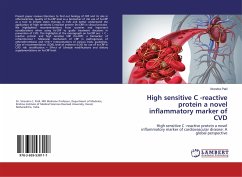
Reactive Oxygen Species - Double Faced Companions
Small Treaty
Versandkostenfrei!
Versandfertig in 1-2 Wochen
22,99 €
inkl. MwSt.

PAYBACK Punkte
11 °P sammeln!
All the deviations from redox homeostasis are cumulatively often named as "oxidative stress". Prolonged, excessive and inadequate response to a given challenge (condition comprehensively defined as stress), leads to a stable alteration of homeostasis perceived as disease. In normal cells reactive oxygen species are generated in a highly controlled manner as they are very important actors involved in vital cell processes (cell division, autophagy, inflammation, immune regulation and stress-related responses) regulation. At low concentration, the reactive oxygen species promote cell survival and...
All the deviations from redox homeostasis are cumulatively often named as "oxidative stress". Prolonged, excessive and inadequate response to a given challenge (condition comprehensively defined as stress), leads to a stable alteration of homeostasis perceived as disease. In normal cells reactive oxygen species are generated in a highly controlled manner as they are very important actors involved in vital cell processes (cell division, autophagy, inflammation, immune regulation and stress-related responses) regulation. At low concentration, the reactive oxygen species promote cell survival and proliferation, whereas at intermediate concentration they lead to a transient or permanent cell cycle arrest and induces cell differentiation. However, uncontrolled generation of these oxidants can lead to oxidative stress and cytotoxicity, causing disruption and loss of important cellular functions and development of complex heterogeneous diseases.












